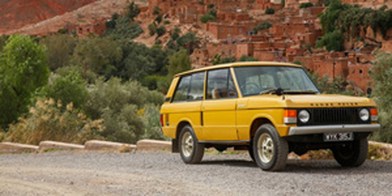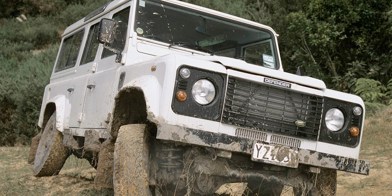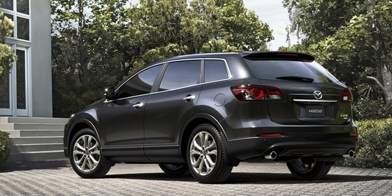Meet the world’s fastest SUV, the new Bentley Bentayga Speed. To win the title, the Bentayga Speed had to see off an ultra-fast sibling rival from the wider Volkswagen Group family – the more bullish Lamborghini Urus.
This, the new Bentayga Speed does by a whisker. The Urus, built in the same factory that once spat out the Contach supercar, tops out at 305.5km/h. The new Bentley imposes its dynamic superiority by reaching a V-max just 0.5kmh faster at 306km/h.
While top speeds of this magnitude may be irrelevant in a New Zealand driving context, such dinner table bragging rights are important when $300,000-plus sums are required to buy either luxury SUV. Bentley also lays down a further claim for the Bentayga Speed, calling it “the world’s most luxurious SUV”.
Having visited both factories and compared the human craftsmanship that goes into each vehicle, I can confirm that the British SUV has the edge on its Italian rival, but the margins are close.
And you will pay more for the Bentayga Speed when it arrives here towards the close of the year. The V8-powered Urus costs $339,000 in New Zealand before loading in the options, while a base Bentayga W12 is $350,000. Pricing for the Bentayga Speed has yet to be announced, but it’s likely to be at least 30 grand north of the cost of an “ordinary” 12-cylinder Bentayga.
The premium will be worth paying for the sake of heritage alone. For speed has been a Bentley core value since wings were first attached to a large white B on an ebony background to create the brand’s emblem. That was 100 years ago. A decade later, the word Speed was added to the name of the Bentley model that won the brand’s fourth victory in the 24-hour endurance race at Le Mans, when the new supercharged 6.5-litre Speed Six crossed the finish line first in 1929. The Speed Six would repeat the feat the following year.
Fast forward nearly 80 years and you’ll find Bentley reviving the Speed nomenclature for a new range of performance variants, starting with the Continental GT Speed in 2007.
Speed variants of the Flying Spur and Mulsanne luxury saloon cars soon followed.
It was inevitable that a Bentayga Speed would join the performance party, especially given the SUV’s impact. The Bentayga captures 52 per cent of sales for Bentley, helped by the lower sub-300K entry prices of the V8-powered petrol and diesel models.
Like the previous 21st-century Bentleys wearing the Speed badge, the extra drive towards far horizons comes courtesy of performance enhancements to the 6.0litre W12 twin-turbo engine that Bentley manufactures in-house. An extra 30kW of power is liberated by new engine management software that increases the turbos’ boost-pressure.
With 467kW of power and 900Nm of force on tap, the Bentayga Speed can reach 100km/h from a standstill in 3.9s. Assisting the launch of the 2.5-tonne luxury SUV is an eight-speed automatic gearbox, driving a permanent all-wheel drive system with a centre differential divvying up 40 per cent of the driving force to the front wheels and 60 per cent to the rears.
A further boost to traction is the stickiness of the 285/40 Pirelli P-Zero tyres that the enhanced Bentayga wears on 10-spoke 22in alloy wheels.
Bentley choose to show off the newest Speed on on the island of Anglesey in the Irish Sea, that will be familiar to Fifth Gear viewers. The track is tight and twisty with surprise hairpin turns lurking in its topsy-turvy topography, and few opportunities for the Bentayga Speed to stretch its legs.
Still, this was the perfect place to assess how the Bentayga Speed would handle the roads of Coromandel, a likely weekend destination for Auckland buyers of the high-rise Bentley. It would also test the extra programming of the Speed’s air suspension and active stabiliser bars when the “sports” setting of eight driving modes is engaged.
It did amazingly well for a weighty SUV that rides high and must fulfill the promise of the Bentley brand to deliver luxurious comfort and lively performance. While I suspect the Urus would set faster lap times around Anglesey due to the 100kg-lighter engine it carries over its front axles, the Bentley hit the ride/handling target smack in the middle of the bullseye.
The first track session was driven in “Bentley” mode, a default setting shared with the base Bentayga W12 that served to show how good the non-Speed model is at disguising all the metal on the move. Helping this impression was the rear-wheel-steering system, which made the SUV handle like a car weighing a tonne less than the Bentley. Turning off the stability system added extra steering from the rear tyres.
Second time out, we were encouraged to select the “sports” mode — the only mode where the Speed differs from the Bentayga W12. This stiffens the active front stabiliser bar more, sharpening the Bentayga’s steering by reducing body roll and adding more grip of the inside front tyre to assist the opposite one doing most of the work.
According to Bentley’s top skid-master, Andy Marson, it’s the 48V electronic architecture that has allowed extra refinement of the handling of the Speed.
The W12’s rasp also takes a turn for the primal in the sports setting, adding to the emotional appeal. “We’ve always had a reserve of power built into this engine,” explains Bentayga line manager, Chris Cole. “There’s a theoretical level of power we can get out of it, and there’s an achievable level in terms of how much we can extract without affecting emissions and other targets.
“We’re at that sweet spot now in terms of what’s achievable — there are no reserves left.”
Hence lots of consideration was given to the design of the rear spoiler for the Bentayga Speed, that had to balance downforce against drag to achieve the target top speed.
Zero-point-five km faster than Urus. Job done.




